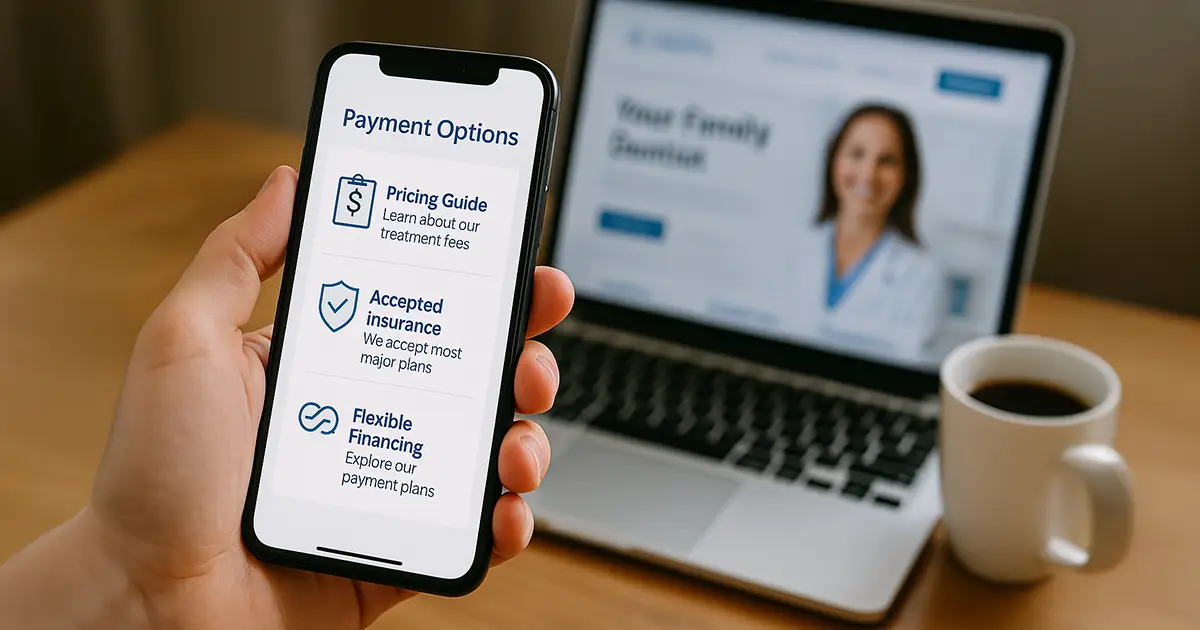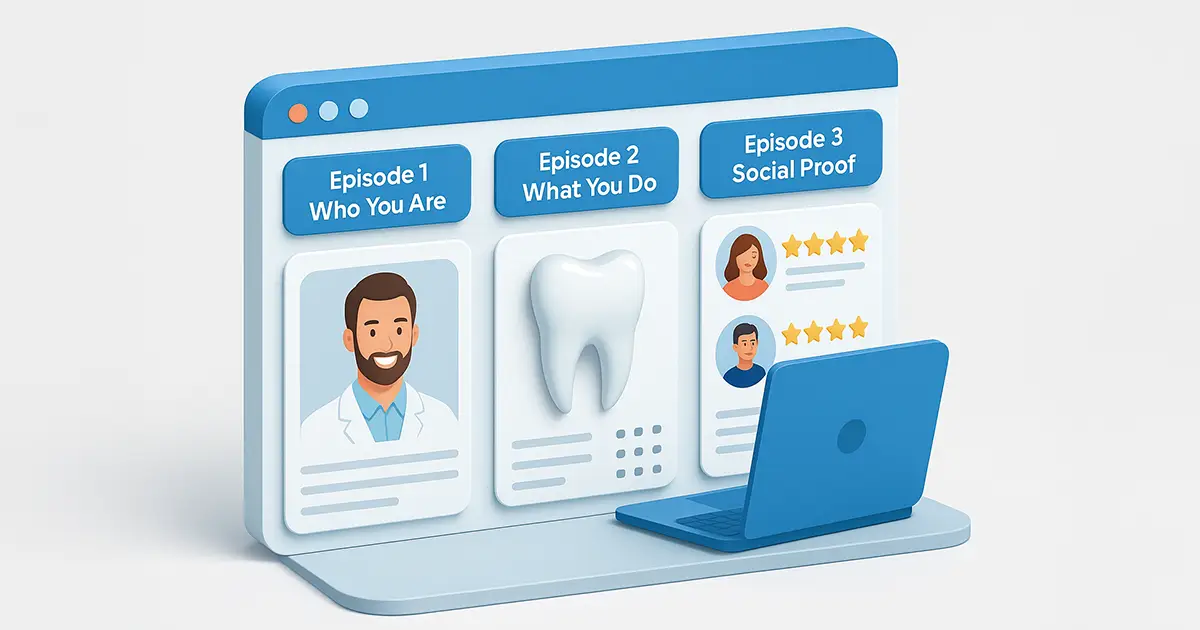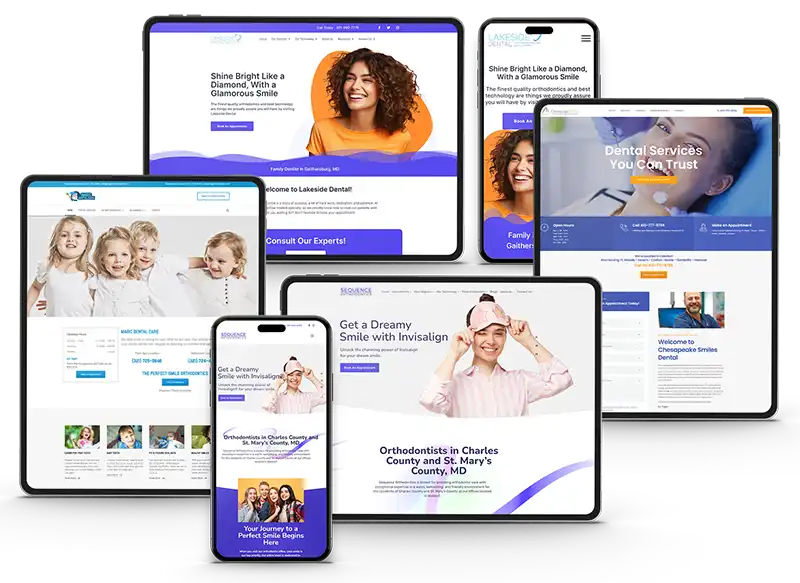As the dental industry increasingly embraces digital transformation, dental UX design—short for user experience design in dental websites and applications—has emerged as a crucial factor in ensuring patient satisfaction, engagement, and retention. Dental clinics and service providers must go beyond aesthetics to focus on functionality, usability, and patient-centered design when building their digital presence.
This article explores the concept of dental UX design, its essential components, real-world applications, and its direct impact on patient behavior and clinic success.
What Is Dental UX Design?
Dental UX design refers to the process of designing digital interfaces (such as websites, patient portals, or booking systems) in a way that prioritizes the needs, behaviors, and preferences of dental patients. It includes visual design, information architecture, content clarity, interactive features, accessibility, and emotional impact.
The goal is to make digital dental experiences as seamless, intuitive, and stress-free as possible, especially since dental anxiety is a major issue that can be eased through thoughtful digital engagement.

Why Is Dental UX Design Important?
- First Impressions Matter
Most patients now research dental clinics online before booking. A clean, fast, and well-organized website is often the first interaction they have with your practice. Poor UX design can drive them away instantly. - Improved Conversion Rates
An optimized user experience boosts online appointment bookings, contact form submissions, and patient inquiries. Even small changes like simplifying navigation or improving mobile responsiveness can dramatically increase conversions. - Enhancing Trust and Credibility
A user-friendly and modern website reflects professionalism and builds trust. Patients equate the digital experience with the quality of clinical service. - Catering to Mobile Users
Over 70% of healthcare searches are done via mobile devices. A responsive dental UX design ensures patients can access services anytime, anywhere, with ease.
Key Elements of Excellent Dental UX Design
1. Clear Navigation and Information Hierarchy
Patients should be able to find essential information—like services, contact info, or appointment booking—in just a few clicks.
2. Appointment Scheduling UX
Simplify forms. Reduce fields. Offer calendar integrations. Give real-time confirmations. An efficient booking flow is crucial for conversion.
3. Emotional and Visual Design
Use calming colors, welcoming language, and relatable imagery. UX design should reduce anxiety, especially for new patients.
4. Mobile Optimization
Ensure the entire experience works flawlessly on smartphones. Buttons should be touch-friendly and content should adjust seamlessly to screen size.
5. Accessibility
Design for users with disabilities. Use alt-text for images, readable fonts, and contrast ratios that help visually impaired users.
6. Content Strategy
Write in a tone that feels human, friendly, and professional. Avoid jargon and focus on patient benefits.

Take Action: Build a High-Performance Dental Website
Discover how TrillSites.com can help you craft an engaging, responsive, and high-converting dental website tailored for your patients’ digital journey.
Dental UX Design Best Practices for Clinics
- Patient Personas
Define your audience segments—parents with children, elderly patients, cosmetic dentistry clients—and design for their unique needs. - Visual Consistency
Keep color schemes, fonts, and imagery consistent. This supports branding and improves user recognition. - Calls to Action (CTAs)
Effective dental UX design includes strong, visible CTAs like “Book Now,” “Ask a Question,” or “Check Our Services.”
Looking to redesign your dental site with expert UX design? Check out TrillSites.com Services for professional solutions tailored to dental practices.
- Speed and Performance Optimization
Use compressed images, efficient code, and fast hosting. Page load speed is a critical UX and SEO factor. - Live Chat Integration
Instant responses can help convert hesitant visitors into booked patients. Ensure your chat is easy to access and mobile-friendly.
Learn More About Dental UX at TrillSites.com
For insights into designing high-converting dental websites, explore the TrillSites.com Blog for expert tips, trends, and strategies.
Real-World Impact: UX Success Story
One clinic integrated a new UX design focusing on mobile-first booking and emotional design. Within 3 months, they saw:
- A 35% increase in online bookings.
- A 22% drop in site bounce rate.
- Improved Google ranking due to mobile and speed optimizations.
This demonstrates that a smart UX design is not a luxury but a necessity for modern dental practices.

FAQs About Dental UX Design
What makes dental UX design different from regular web design?
Dental UX design is specifically tailored to the psychological and practical needs of dental patients, such as reducing anxiety, simplifying appointment booking, and building trust in the dentist’s expertise.
How does UX design affect SEO for dental websites?
Google rewards user-friendly websites. Fast load times, mobile responsiveness, and intuitive navigation improve both user experience and search engine rankings.
What are some common mistakes in dental UX design?
Common pitfalls include cluttered layouts, unclear calls to action, unresponsive design on mobile, and lack of patient-focused content.
How often should I update my dental website UX?
Ideally, every 2-3 years, or whenever patient behavior, technology, or SEO best practices shift significantly.
Can a UX-optimized site really increase bookings?
Absolutely. Studies show that user-friendly websites can increase conversion rates by up to 200% through improved design and user flow.
Conclusion
Dental UX design is not just about aesthetics—it’s about function, emotion, and strategy. It directly influences how patients perceive, interact with, and trust your practice. With more patients starting their journey online, investing in superior UX design is essential for growth. By partnering with expert agencies like TrillSites.com, dental professionals can ensure their digital platforms deliver meaningful, efficient, and trustworthy experiences that drive real results.
References
- Norman, D. A. (2013). The Design of Everyday Things. Basic Books.
- Nielsen, J., & Budiu, R. (2012). Mobile Usability. New Riders.
- Krug, S. (2014). Don’t Make Me Think, Revisited: A Common Sense Approach to Web Usability. New Riders.
- Kim, S. Y., & Kim, E. J. (2020). UX principles in healthcare digital services. Journal of Healthcare Informatics Research, 4(1), 45-62.

